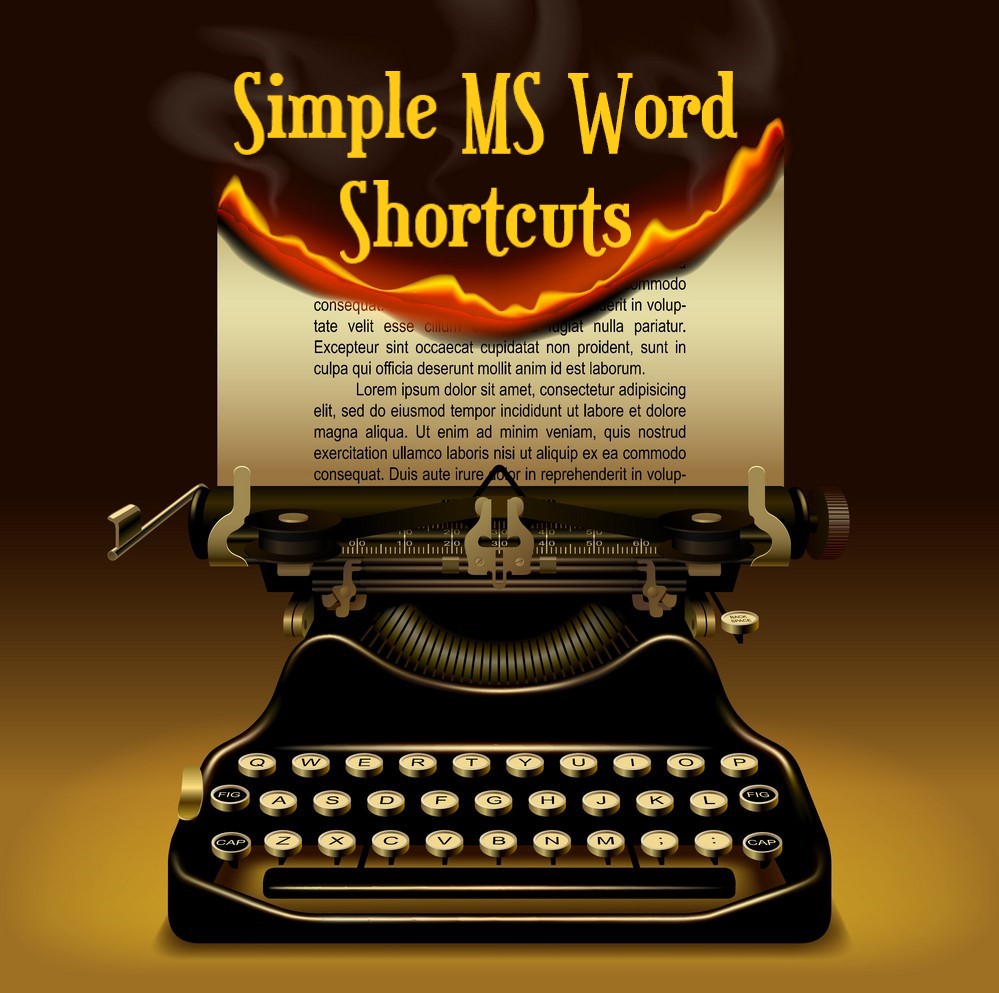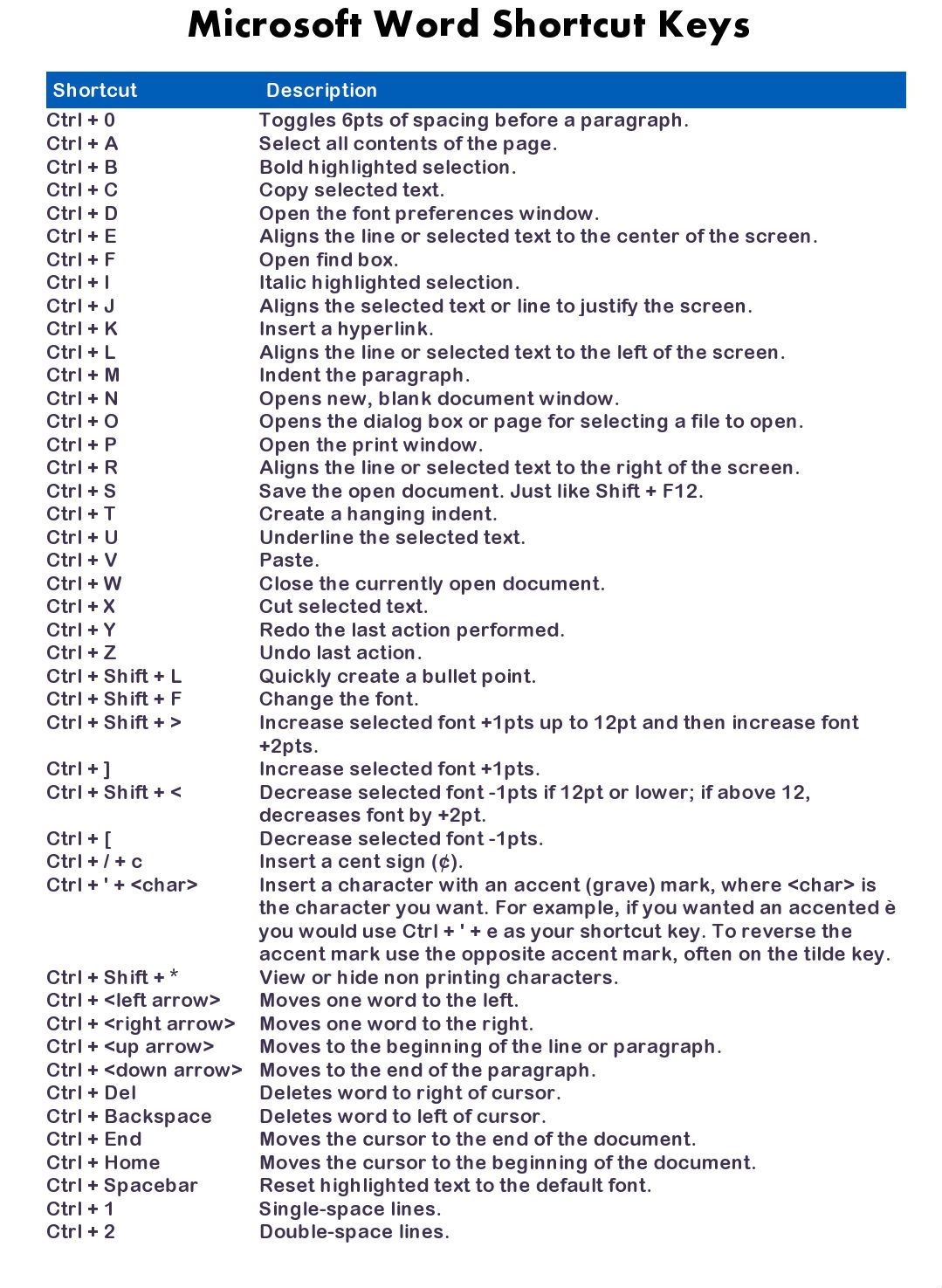

Saves you a lot of trouble in assigning a hotkey.Īugust 2, - I think the most useful hotkeys are the desktop hotkey and the windows hotkey. You just keep hitting Tab in order to flip through the programs that are open. Hotkey shortcuts may help reduce the risk of carpal tunnel syndrome and other repetitive use injuries to the wrists.Īugust 2, - If you're just looking to switch between programs, you can also hold the Alt button and the Tab button and it will come up with a little menu of running programs. If you find yourself continually reaching for the mouse to carry out a necessary task or function, consider looking for an existing hotkey combination or creating your own. Using hotkeys can improve productivity and reduce repetitive mouse movements that might contribute to conditions like carpal tunnel syndrome.
#MICROSOFT WORD HOTKEYS SOFTWARE#
Don't forget to check inside your favorite software programs as well, including your email client, Web browser, and productivity software. Search for "keyboard shortcuts" or "hotkeys / hot keys." Printing the list and keeping it handy can aid you in memorizing the hotkeys you find most helpful. To view existing hotkeys in your operating system, check the main Help menu (hotkey F1 will get you there). In Microsoft® Word, for example, the macro program is available through Tools > Macro > Record New Macro. Pressing the hotkey from that point forward will activate the sequence, automating the function. The recorded movements are assigned like a script to the chosen key(s). The process normally takes only a moment, and essentially involves opening a macro program to record the sequence required to carry out the desired function. Hotkeys typically involve the use of the 'Ctrl' or 'Fn' key. Custom hotkeys are especially useful in productivity software, in debugging tools, and in gaming applications. Macros can be assigned to these extra keys to create custom hotkeys. Subscribe to get more articles like this oneĭid you find this article helpful? If you would like to receive new articles, join our email list.Some keyboards feature extra keys that are user-programmable, (though standard keys can also be programmed). If you are comfortable using styles in Word, you can also apply styles that include bullets. Type > (greater than symbol) and then press Tab or Spacebar to enter a tail-less arrow.Type => (equal sign and the greater than symbol) and then press Tab or Spacebar to enter a thick arrow.Type -> (one hyphen and the greater than symbol) and then press Tab or Spacebar to enter a thin arrow.Type – (one hyphen or dash) and then press Tab or Spacebar to enter a dash style bullet.Type - (two hyphens or dashes at the top of the keyboard) and then press Tab or Spacebar to enter a square bullet.You can also use several other characters for other types of bullets using the AutoCorrect method: To turn off the bullets and return to the Normal style, press Ctrl + Shift + N.Press Enter at the end of the paragraph.Type the text for the bulleted paragraph.Word inserts the default bullet and indents the paragraph. Press Shift + 8 to enter an asterisk (*).Position the cursor at the beginning of a new line where you want to insert a bullet.To apply bullets using AutoCorrect (this option should be turned on by default):

This method can be used before you type the first paragraph. Using Word’s AutoCorrect, you can also apply bullets as you type. The Bullets drop-down menu includes other types of bullets: You can also select Define New Bullet to choose other characters as bullets. Word will apply the bullets and apply indents to the paragraphs. Press Enter to select the highlighted bullet.Press the right arrow to move through the different types of bullets.Press Alt > H > U (Alt and then H and then U).

To apply bullets using the Bullets drop-down menu: Word will apply the default bullets and apply indents to the paragraphs.Īpplying bullets using the Bullets drop-down menu
#MICROSOFT WORD HOTKEYS HOW TO#
Recommended article: How to Turn Off Automatic Bullets and Numbering in Word Applying default bullets using Word’s built-in keyboard shortcut A paragraph is anything with a hard return after it. Since bullets are best applied as a paragraph format, the following shortcuts apply to paragraphs. You can add bullets in Microsoft Word documents using several keyboard shortcuts. Use Keyboard Shortcuts to Apply Bullets to Paragraphs in Wordīy Avantix Learning Team | Updated January 10, 2021Īpplies to: Microsoft ® Word ® 2010, 2013, 2016, 2019 or 365 (Windows)


 0 kommentar(er)
0 kommentar(er)
